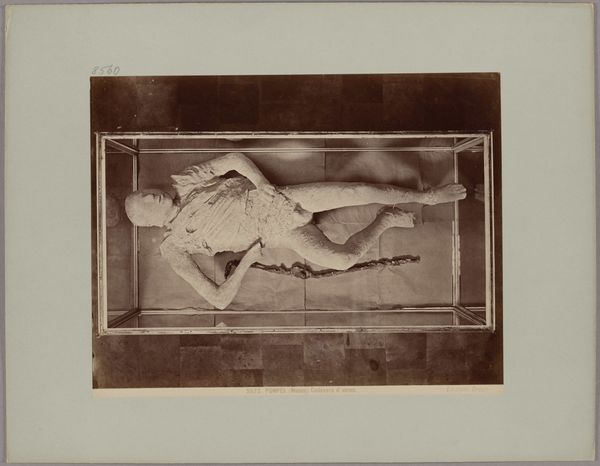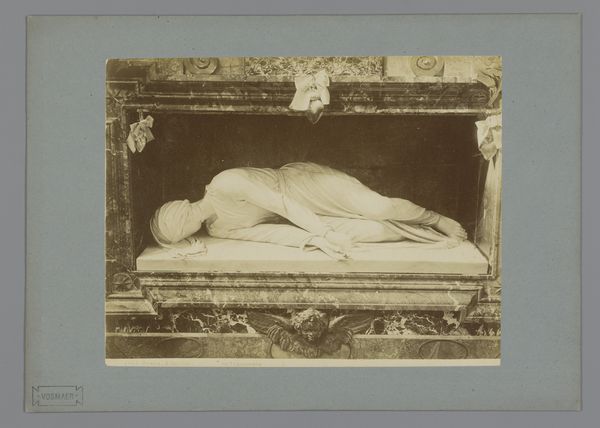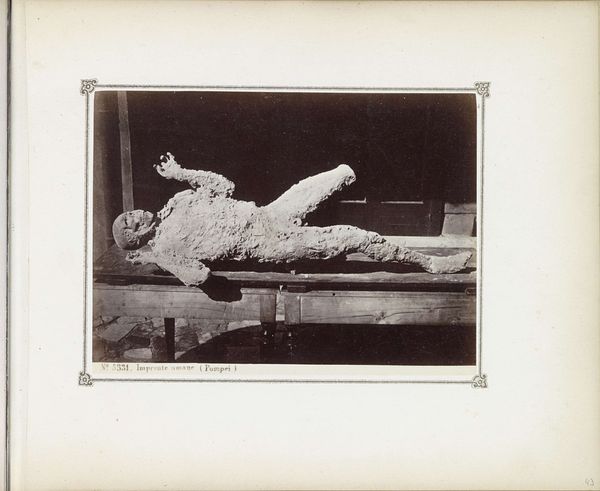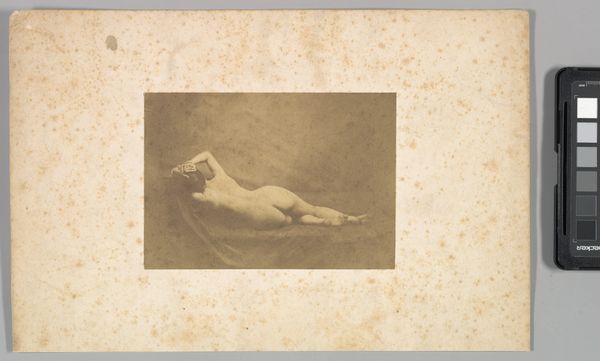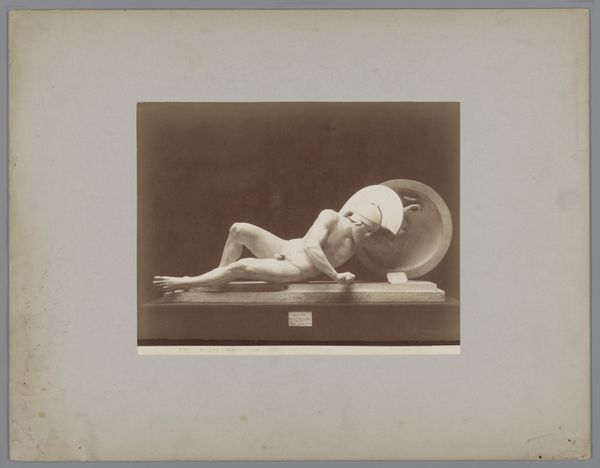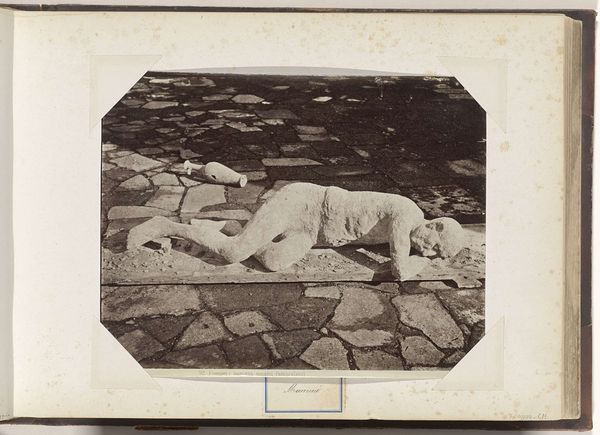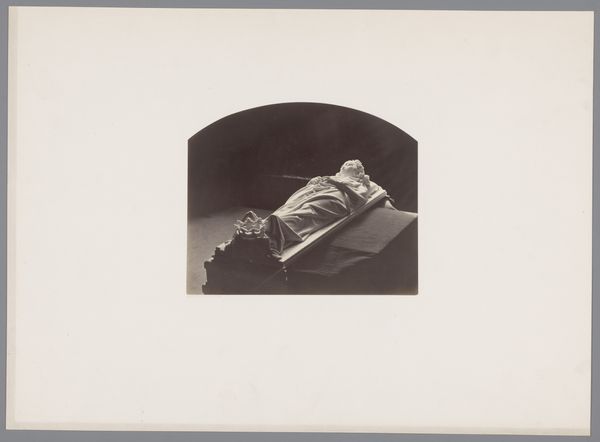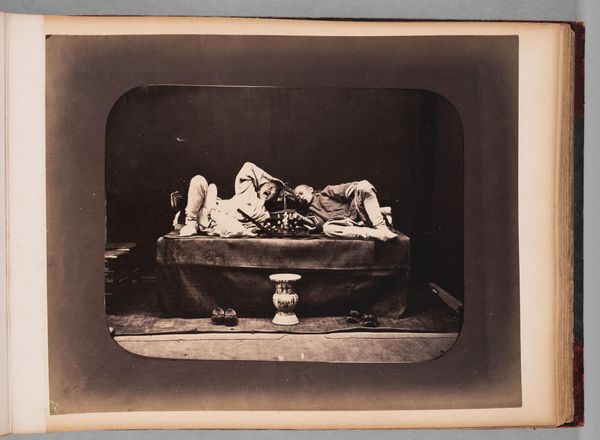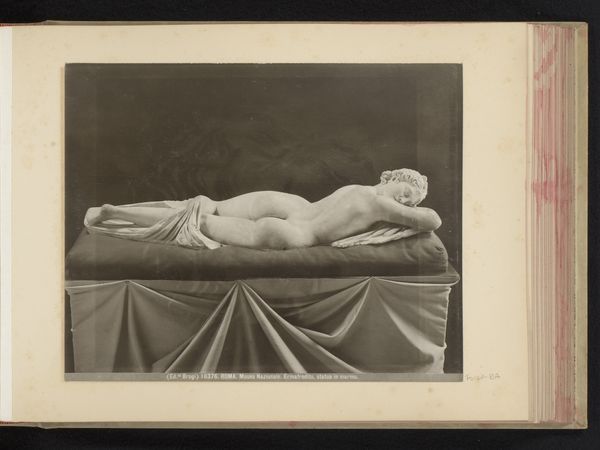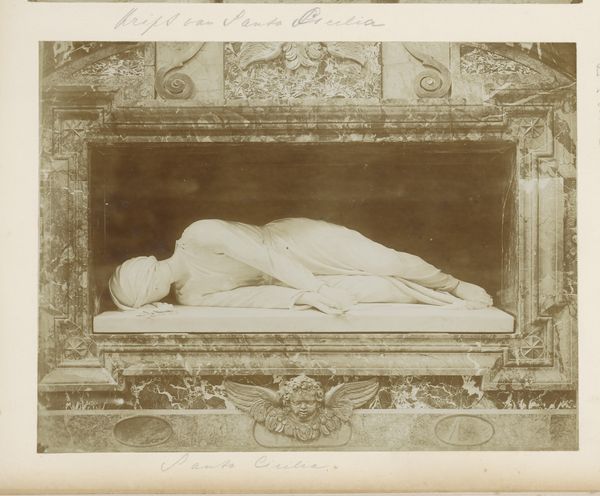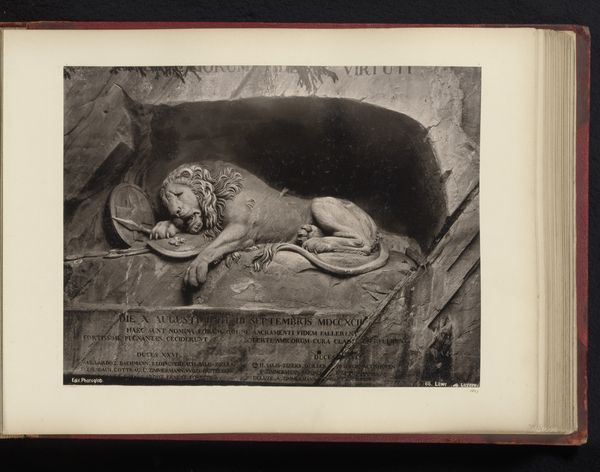
cardboard, albumen-print, paper
#
cardboard
#
albumen-print
#
photo of handprinted image
#
16_19th-century
#
pastel soft colours
#
muted colour palette
#
photo restoration
#
ink paper printed
#
white palette
#
paper
#
unrealistic statue
#
watercolour illustration
#
soft colour palette
#
watercolor
Copyright: Public Domain
Curator: What strikes me first is the sheer vulnerability. The stark whiteness against the muted background creates a sense of profound isolation. Editor: Indeed. This is an albumen print from around 1870-1880 by Giacomo Brogi. Its title, “Pompeii (Museum) Corpse of a man, No. 5579,” places it firmly within a historical and scientific context. Consider the role of photography in the 19th century— Curator: Before you move into its historical context, I am arrested by its almost brutal simplicity. The pose, the lack of embellishment—it feels raw, unmediated. Brogi really captured a powerful juxtaposition here. A man lying, presumably trying to get one last breath. A beautiful form that can be also grotesque. Editor: Precisely, this albumen print documents one of the many plaster casts made of the victims of Mount Vesuvius's eruption. These casts were both scientific records and public spectacles. They played a crucial role in shaping the modern understanding of Pompeii as not just an archeological site, but a human tragedy. Photography facilitated the mass dissemination of these images— Curator: Do you think that he had some inspiration with the neoclassical art, which held to ideas and form and the stoicism, where death was understood more naturally and philosophical? Editor: Interesting parallel! Given the time, this hypothesis fits; The grand tour was well into the 19th century, but these death casts became a global symbol, exhibited and endlessly reproduced for both scholarly examination and morbid fascination. Think of the societal impact that could possibly have; to observe death so vividly displayed, provoking empathy. Curator: I can't help but admire the tonal range achieved with the albumen process, it highlights texture. Editor: In viewing this haunting work, it serves as a grim memento mori but also offers us invaluable insights into the history of archeology, photography, and the evolving cultural relationship with death and disaster. Curator: Agreed. It makes one question the aesthetics, the values of his own era. Editor: Yes. We can begin to see the intersection between science, documentation, and a truly captivating emotional resonance.
Comments
No comments
Be the first to comment and join the conversation on the ultimate creative platform.
